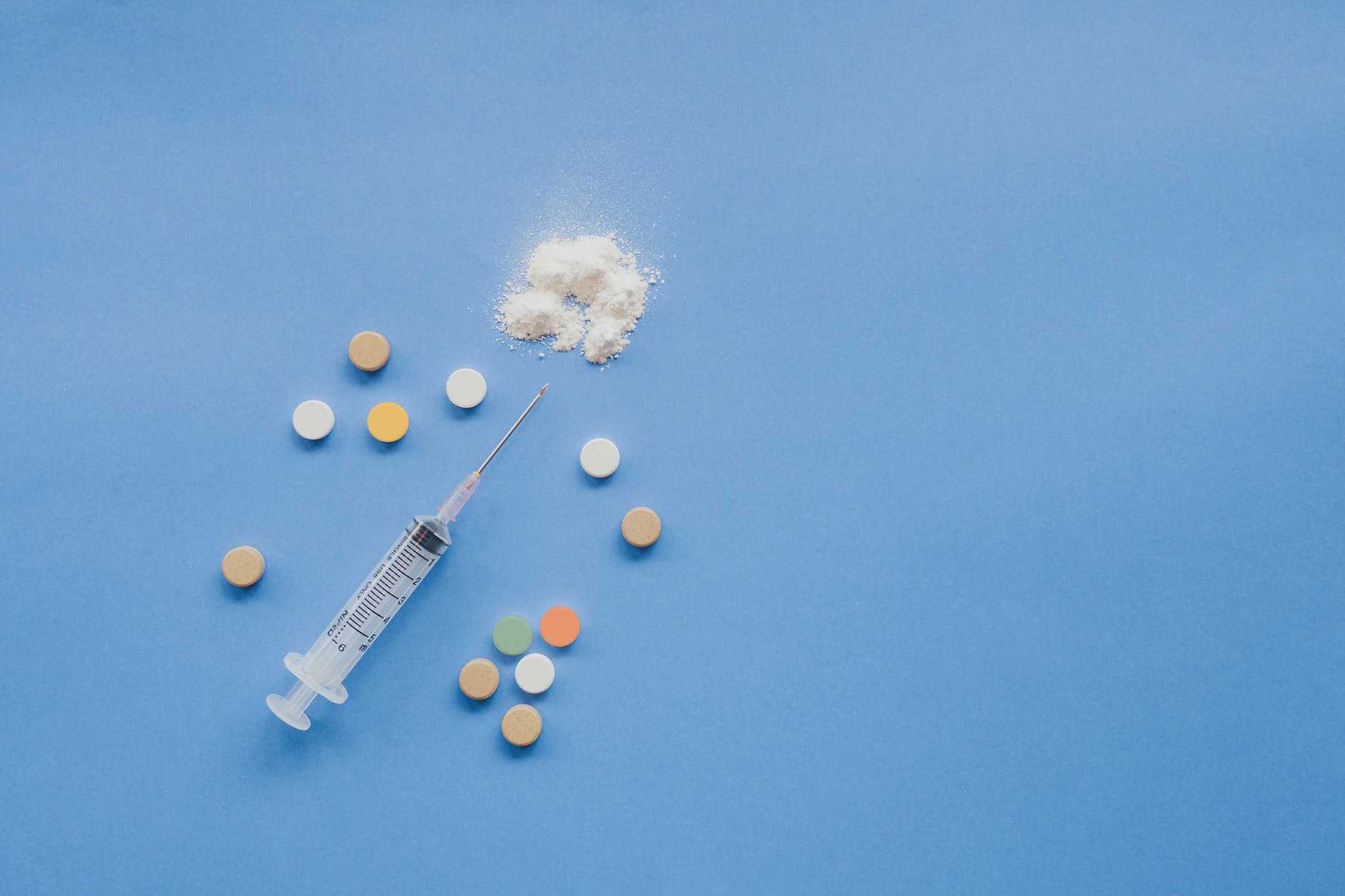Addictive substances, particularly illicit drugs, are chemical compounds that cause changes in peoples’ physiology and psychology when taken. Ranging from hallucinations to signs of violent tendencies, the effects of drugs may even be life-threatening. Also, chronic or long-term drug consumption can lead people to develop certain negative behaviors, which may endanger their lives. Relying on drugs to escape circumstantial problems, or even feel better emotionally, will eventually cause the person to develop drug dependence and become prone to other physical and mental dangers.
However, taking addictive substances once or twice does not immediately constitute drug addiction. Consumed drugs, even in the form of detectable alcohol levels, eventually subside after a certain period. The time it takes for the drug substances to decay or exit the body through human waste heavily depends on the amount of the drug(s) used and the individual’s physical characteristics, such as age and body weight. It is essential to note how long drugs stay in one’s system, not only to avoid legal repercussions, but also to live a productive and responsible lifestyle.
How Long Will a Drug Stay in My Body?
Addictive substances, including alcohol, are prohibited in most schools and work environments. Aside from the fact that they are illegal in most states in the US, addictive drugs usually lead to a person’s intoxication and loss of the ability to function productively. As a result, people who consume drugs near moments when sober consciousness is needed, fail to do their work. In some cases, people who use drugs end up in fatal accidents.
To prevent these instances from happening, both the government and private institutions implemented mandatory drug tests. For example, we developed breath and saliva tests to avoid drunk driving, and schools and offices then started requiring urine and blood tests. These were considered measures in preserving the integrity and lives of the sober community. Considering this, receiving a positive result in a drug test can drastically affect a person’s career, legal status, and even relationships.
We use processes that allow us to detect illicit drugs, prescription medicines, and alcohol in bodily fluids- including urine, saliva, and blood. Also, traces of these substances can be found in hair and sweat, making it physically impossible for a person to hide their consumption of drugs when undergoing different kinds of drug tests. Considering that, various drug types have different average durations of how long they stay in an individual’s body and system. As further tests can detect other drugs at different times since consumption, the following are the usual time it takes for specific drug traces to become fully undetectable under a formal breath or hair strand test:
- Alcohol. According to recent studies, the human body processes one unit (0.017%) of alcohol per hour. That’s fast. However, the standard alcohol breath tests can still detect alcohol traces from consumption 24 hours prior. Also, we can detect alcohol taken within the last three months from hair strand tests.
- Amphetamines. Amphetamine ingested in the last 90 days (3 months average) can be found in traces using a hair strand test.
- Cannabis. Cannabis, commonly known as THC, also lasts as traces on hair roots for three months, similarly to other illicit drugs.
- Cocaine. Cocaine is one of the drugs which lasts a long time inside a person’s body, especially when taken chronically and for a long time. Traces of cocaine in hair roots usually lasts from several months to even years.
- Crystal Methamphetamine. Hair strand tests can detect crystal meth for up to four months after use.
- Opioids. As the opioids group is one of the most addictive drug types, it is common for individuals to use this in large doses in consecutive months. However, it decays faster inside a person’s body, undetectable in breaths and hair strands after 60 days.
- Ecstasy. Ecstasy also takes 100 days to disappear entirely from hair strands.
It is necessary to keep in mind that hair strand tests are the most precise and accurate when detecting drug traces in the human body. Hair strand tests were designed to detect specific chemical compounds within the deep parts of the hair follicle. Although they may serve as indicators for drug usage in the near past, most drug tests nowadays assess the blood, saliva, and urine. One must also remember that the drug durations mentioned are always subject to physical differences, such as body size and overall metabolism.
How long do drugs stay in blood and saliva?
Drug traces in blood and saliva are not as long-lasting as those found in hair follicles. To be specific, most drugs can only be detected within a few hours to a couple of days after use. It is for the reason that, unlike hair, blood and saliva are continuously working. They are replaced faster in the human body, especially when the person is physically active. The following are the average time certain drugs stay in blood and saliva:
- Alcohol – 10-24 hours present in saliva after you have your last drink. It stays for one day in the bloodstream.
- Amphetamines – One to two days detectable in saliva after last use. It takes six hours to disappear from the blood.
- Cannabis – 24-72 hours present in saliva since the last smoke. It stays for four hours in the bloodstream.
- Cocaine – Cocaine can be detected in both blood and saliva for one to two days.
- Crystal Meth – Crystal Meth can be detected in both blood and saliva for three to five days since the last use.
- Opioids – 12-36 hours present in the saliva. 24 hours detectable in the blood.
- Ecstasy – Ecstasy lasts relatively longer in the blood than the saliva; it is detectable up to 10 hours in the saliva, and up to 4 days in the blood.
What Is a Drug’s Half-Life?
The half-life of a drug is the time it takes for the substance amount to be reduced in half. The process usually happens inside the body, during the time when the human systems process the chemical compounds that constitute the illicit drug or alcohol. The time it takes depend on the person’s age, weight, size, sex, and metabolism. Overall health is also taken into account as the body’s circulatory functions vary between people.
Drug half-life varies per substance. It is a common knowledge that complex chemical compounds, such as those found in synthetic drugs, are harder to break down than common and natural ones. Regardless, both types of addictive substances still pose health threats to a person using them.
How Long Are Drugs Detected in Urine?
Drug tests which make use of urine are the most common tests in schools. It is non-invasive, but it still ensures that drugs taken hours or days before can still be detected. The following are the average durations that drugs and alcohol are still detectable in an individual’s urine:
- Alcohol – Alcohol is not usually detected in urine. Breath test is its main detecting test.
- Amphetamine – One to three days
- Cannabis – Three days for non-consistent usage. Thirty days for chronic consumption.
- Cocaine – Three days to two weeks
- Crystal Meth – One to four days for non-consistent usage. One week for chronic consumption
- Opioids – Two to four days detectable in urine after ingestion.
- Ecstasy – Three to five days detectable in urine after last use.
Why Drug Detection Timetables Are Inconsistent?
Drug and addiction researchers are not able to propose specific and exact timetables for drugs detected in the human body because multiple factors affect the time it takes for substances to decay and exit. As mentioned, human systems within the body of different people vary in terms of speed and capacity. For instance, a person who has high tolerance for alcoholic beverages may have a body that can process the alcohol compound well and faster. Considering this, each person is unique in terms of physiology or bodily functions.
Regardless, there are estimates for the time at which drugs stay in one’s system. It is important to be aware of these, as being found positive on an addictive substance can affect one’s education, career, or relationships. The message here is NOT to avoid being caught, rather to seek professional help when necessary. There are drug treatments centers in Arizona which provide personalized treatment and care, that can address both short-term and chronic use of addictive substances.
At Buena Vista Recovery, we provide programs and therapies designed for different types of drug addiction. We have highly-regarded substance abuse treatments in Mesa, Az. Our programs do not focus solely on treatment, but also prevention and reintegration to the community. We believe that everyone deserves another chance at a productive life.
Disclaimer: This post serves a strictly educational use. It does not reflect the services, products, or therapeutic approaches of this establishment or its healthcare practitioners. The purpose of this blog is not to advertise the products, services, or therapeutic approaches of any other establishment that may be associated with this site. On the subject of safe or legal services, products, and appropriate therapies, recommendations ought to be given by a qualified professional on a case to case basis.




